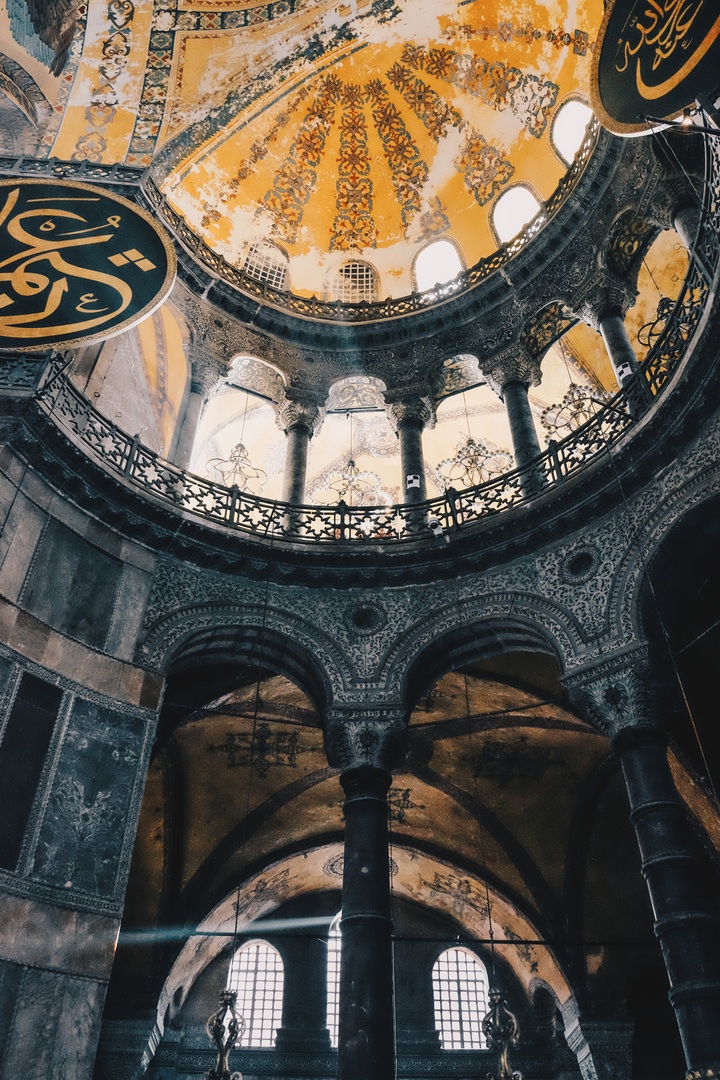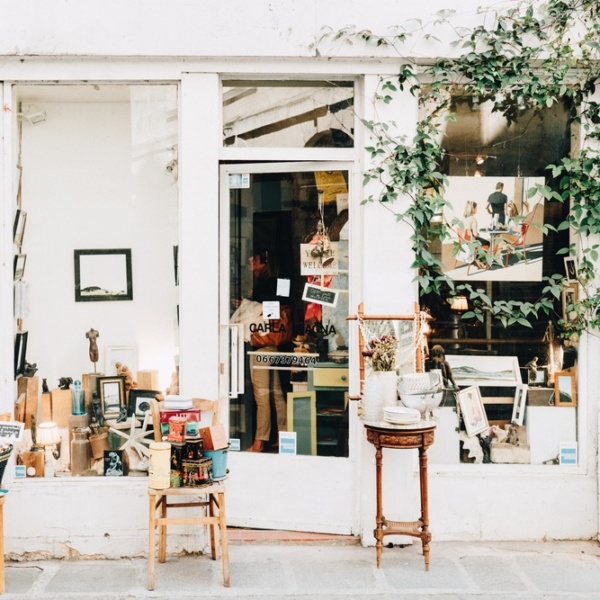No first time trip to Istanbul can be complete without visiting its two outstanding landmarks, Hagia Sophia and The Blue Mosque. These two great architectural achievements from the Ottoman Empire stand next to each other in Istanbul’s main square, as if competing to be more impressive than the other. During my trips in Istanbul in October and December 2015, I was fortunate to get the chance to visit both places twice.
Hagia Sophia / Aya Sofya
A glorious architecture survivor in the history of Istanbul, is a former church, mosque and now a museum with a stunning Byzantine and Islamic architecture. The grand dome of Hagia Sophia that towers over the sky of Istanbul is as beautiful inside as it is on the outside. The building is nearly 1500 years in age and every wall and floor has a story to tell.
The beautiful ancient painting and mosaics has survived the centuries in superb conditions; you can bet lots of efforts were made in the restorations. As you walk inside, you’ll see a unique and interesting blend of both Byzantine Christian and Muslim artworks side-by-side. This holy building has indeed served as a center of prayer for Pagan, Christian Orthodox and Sunni Islam.
Standing in the middle of this building and looking up at the glorious dome; admiring the calligraphy and beautiful artwork, picturing the numbers of emperors and sultans who has probably stood exactly where I was standing at the time… it’s very hard not to feel insignificant. Its mesmerising architecture definitely made me stand humbled and soak in the intricacy and tranquility.
Blue Mosque / Sultanahmet Camii
Standing tall with its cascading domes and six minarets next to Hagia Sophia is the Sultan Ahmed Mosque / Sultan Ahmet Mosque (Turkish: Sultan Ahmet Camii), or famously known as the Blue Mosque. In the 17th century, The Great Sultan Ahmed wished to build an Islamic place of worship that would be even better than the Hagia Sophia, hence the building was later named after him.
The fact that the Blue Mosque has six minarets is very unique, as most mosques have only one to four minaret. According to our tour guide, one of the story was that the Sultan directed his architect to make gold (altin) minarets, which was misunderstood as six (alti) minarets.
Just like Hagia Sophia, the interior of the Blue Mosque is just as grandeur as the exterior. If the former Byzantine church interior is predominantly painted in yellow mustard color, the Blue Mosque interior colors are beautiful pastel hues, with the majority of blue Iznik tiles that gives the Mosque its popular name.
The high ceiling is truly a sight to behold. It is lined with the 20,000 blue tiles of 16th-century Iznik design, the oldest tiles feature flowers, trees and abstract patterns. Natural sunlight fill the whole space from hundreds of beautiful stained glass windows. It is indeed a masterpiece of art and architecture, there isn’t a space within it that isn’t beautiful.
Even though it’s popular tourist site in Istanbul, the Mosque continues to function as a mosque today; men still kneel in prayer on the mosque’s lush red carpet after the call to prayer. It’s a peaceful thing to witness.
Some informations on visiting Hagia Sophia and The Blue Mosque
Hagia Sophia
Blue Mosque
Please treat the mosque with respect as people do use it as a place of worship. You will be required to remove your shoes, cover your head (if you’re female) and keep a quiet voice.
10








































